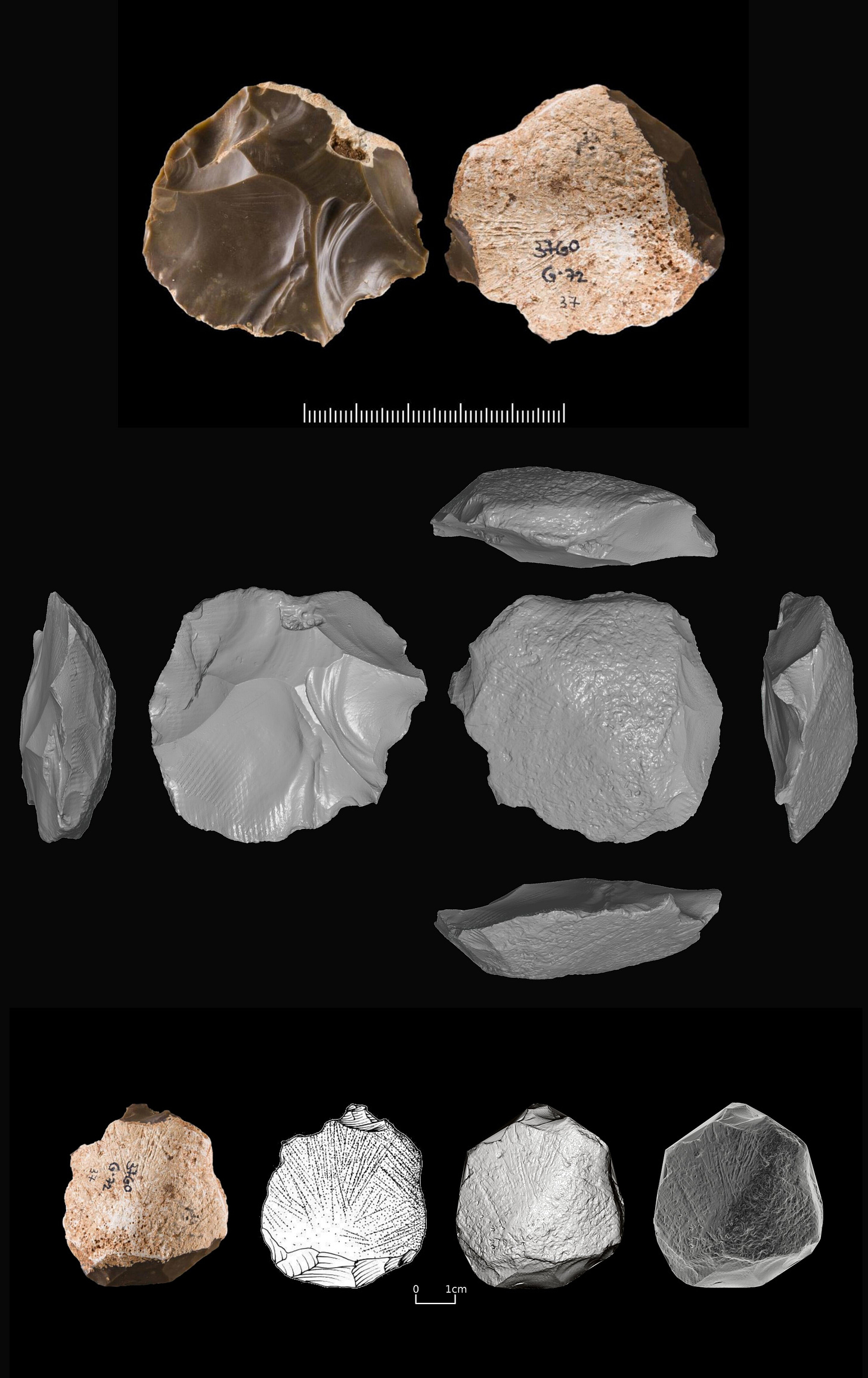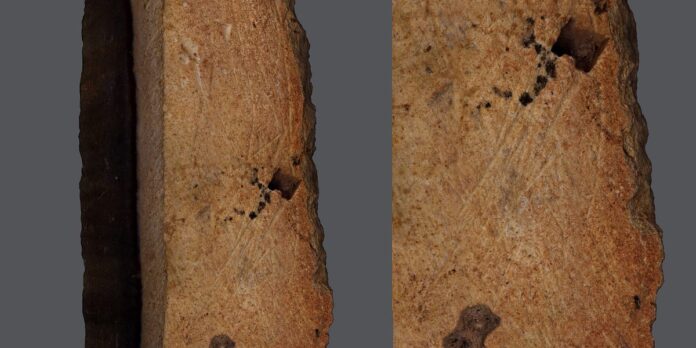For decades, archaeologists have debated the origins of symbolic thought in early humans. The ability to carve meaning into the physical world—to inscribe symbols, create art, or mark objects with intent—has long been considered a defining characteristic of Homo sapiens. But at what point did this transition occur? Was it an innovation exclusive to modern humans, or did our distant relatives also engage in abstract expression?
A recent study published in Archaeological and Anthropological Sciences takes a significant step toward answering these questions. Researchers led by Mae Goder-Goldberger, João Marreiros, Eduardo Paixão, and Erella Hovers have conducted a meticulous analysis of incised stone artifacts from the Levantine Middle Paleolithic, dating back more than 50,000 years. Their findings provide compelling evidence that some of our ancient relatives may have engaged in deliberate, symbolic marking long before the spread of modern humans across the globe.
The researchers focused on five artifacts from four archaeological sites: Manot Cave, Amud Cave, Qafzeh Cave, and Quneitra. These sites are well-known in paleoanthropology, housing some of the earliest evidence of human occupation in the Levant. The artifacts themselves varied in form—two engraved Levallois cores, a flint plaquette, and two incised cortical flakes—but each bore markings that required closer scrutiny.
To determine whether these incisions were intentional engravings or merely the result of tool use, researchers applied advanced 3D surface analysis. This technique allowed them to differentiate between marks made for functional purposes (such as tool sharpening) and those that suggested symbolic intent.
What they found was striking:
“The incisions on the Manot, Qafzeh, and Quneitra artifacts show similar geometric characteristics. Notably, in each of these cases, the incisions form patterns that align with the artifact’s surface topography and shape. In contrast, the incisions on the Amud artifacts are shallower, with no clear orientation or patterning.”
The distinction is crucial. While the Amud artifacts likely served practical purposes—perhaps as abraders or sharpening stones—the engravings on the Manot, Qafzeh, and Quneitra artifacts displayed elements of organization and repetition. Such traits are hallmarks of intentionality, suggesting the presence of cognitive behaviors once thought to have emerged much later in human evolution.
If the engravings found at these Levantine sites were not merely incidental markings, what were they?
Symbolic behavior in early humans is often difficult to identify with certainty. While objects like beads, figurines, and cave paintings provide clear evidence of abstract expression, simple engraved lines—such as those found in this study—are more ambiguous. Some researchers argue that such markings may represent early attempts at proto-aesthetic behavior rather than fully developed symbolic communication.
Still, the findings from this study align with a broader body of research suggesting that symbolic expression may have predated modern humans. Previous discoveries, such as the engraved shell from Trinil (540,000 years old) and the Blombos ochre engravings (75,000 years old), indicate that our ancestors were experimenting with abstract representation long before the Upper Paleolithic explosion of art.
“The methodology we employed not only highlights the intentional nature of these engravings but also provides for the first time a comparative framework for studying similar artifacts, enriching our understanding of Middle Paleolithic societies.” — Dr. João Marreiros
This suggests that early hominins may have possessed cognitive capacities akin to those of modern humans—or at the very least, that they were on a trajectory toward symbolic reasoning.
While this study provides a groundbreaking analysis of Middle Paleolithic engravings, some limitations must be considered.
First and foremost is sample size. With only five analyzed artifacts, it remains difficult to determine whether these engravings were widespread cultural phenomena or isolated, individual expressions. Were such engravings common among Middle Paleolithic hominins, or were these artifacts outliers?
Second, the lack of direct association with human remains poses a challenge. While Qafzeh Cave is well known for its early Homo sapiens burials, Manot Cave and Quneitra contain archaeological deposits from multiple time periods. This makes it difficult to attribute these engravings to a specific hominin species. Did Neanderthals create them? Early modern humans? A population of hybrid ancestry?
Finally, context matters. Without knowing whether these artifacts were part of larger symbolic traditions—such as burial practices, ritual behavior, or social markers—it remains speculative to interpret them as evidence of fully developed symbolic cognition.
Despite these challenges, this study adds to a growing body of evidence suggesting that the roots of symbolic behavior extend deeper into prehistory than previously believed.
For decades, archaeologists assumed that abstract thinking and symbolic expression emerged only with the rise of Homo sapiens. The art of Lascaux, the Venus figurines, and Upper Paleolithic ornaments were seen as the first true signs of cognitive modernity. But discoveries like the Levantine engravings are challenging that timeline.

If Middle Paleolithic hominins—whether Neanderthals or early modern humans—were capable of creating deliberate, structured engravings, it suggests that symbolic thought may have been a shared trait among multiple human species rather than a unique innovation of Homo sapiens.
“Abstract thinking is a cornerstone of human cognitive evolution. The deliberate engravings found on these artifacts highlight the capacity for symbolic expression and suggest a society with advanced conceptual abilities.” — Dr. Mae Goder-Goldberger
The study of Middle Paleolithic engravings represents more than just an analysis of ancient stone artifacts. It is a window into the minds of our distant ancestors, revealing how they saw the world, how they organized their thoughts, and perhaps even how they communicated with one another.
While more research is needed to fully understand the significance of these markings, one thing is clear: symbolic expression did not appear overnight. Instead, it likely developed gradually, with earlier hominins engaging in forms of proto-symbolism long before the explosion of artistic creativity seen in the Upper Paleolithic.
This challenges long-held assumptions about what it means to be human. It forces us to reconsider where the boundaries of symbolic cognition lie—and whether Neanderthals and other archaic humans should be included in the narrative of artistic and cultural evolution.
As research continues, we may discover that the first artists of the prehistoric world were not just our direct ancestors but a broader, more diverse cast of hominins sharing the cognitive landscape of early human expression.
For those interested in the cognitive evolution of early humans and symbolic behavior, the following studies provide essential context:
-
Henshilwood, C. S., et al. (2018). “Symbolic evolution and the cultural explosion: A model for the emergence of symbolic thinking.” Proceedings of the National Academy of Sciences. DOI: 10.1073/pnas.1719990115.
-
d’Errico, F., & Stringer, C. (2011). “Evolution, revolution or saltation scenario for the emergence of modern cultures?” Philosophical Transactions of the Royal Society B. DOI: 10.1098/rstb.2010.0337.
-
Zilhão, J. (2019). “Neanderthals and symbolic behavior.” Current Anthropology. DOI: 10.1086/704088.


